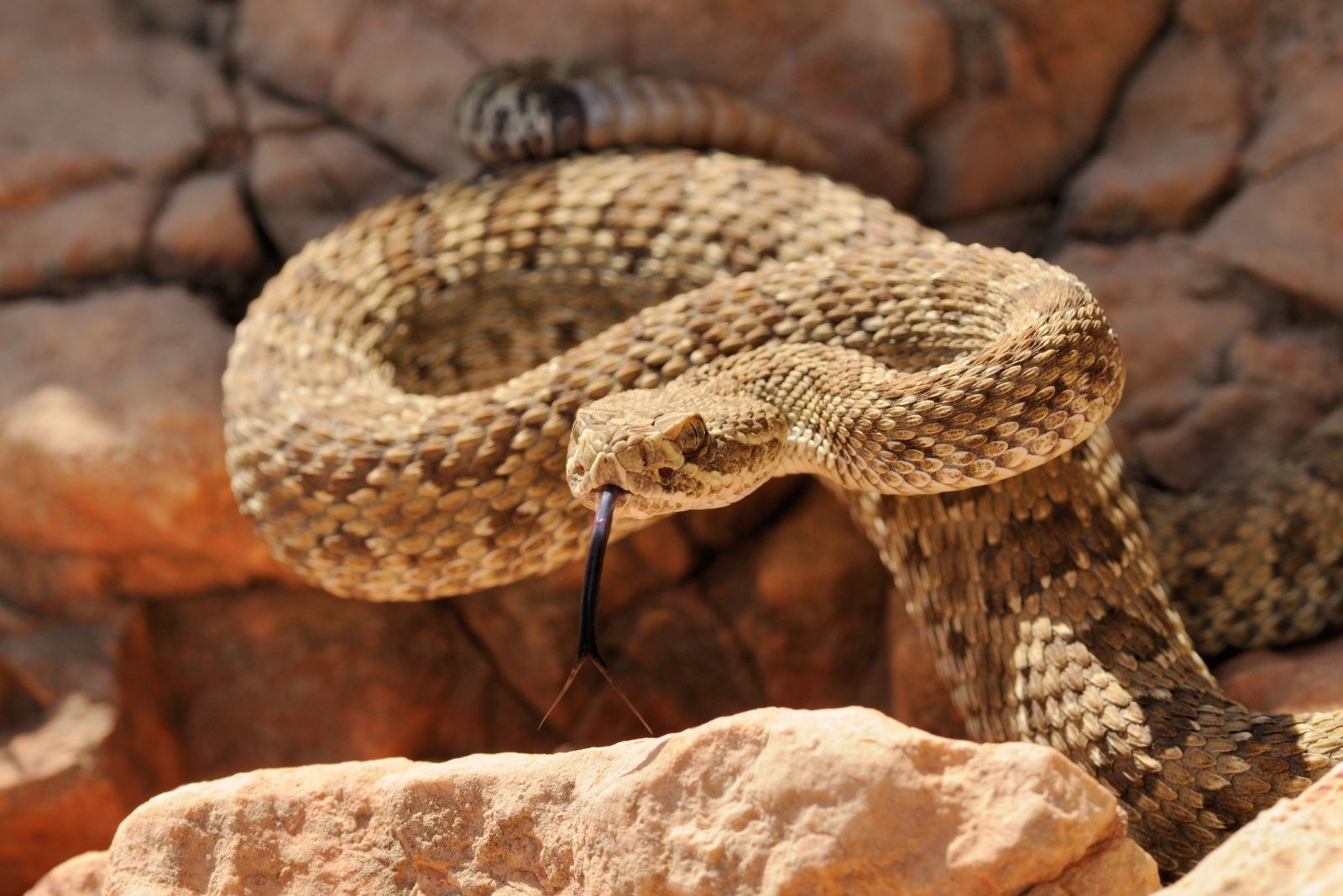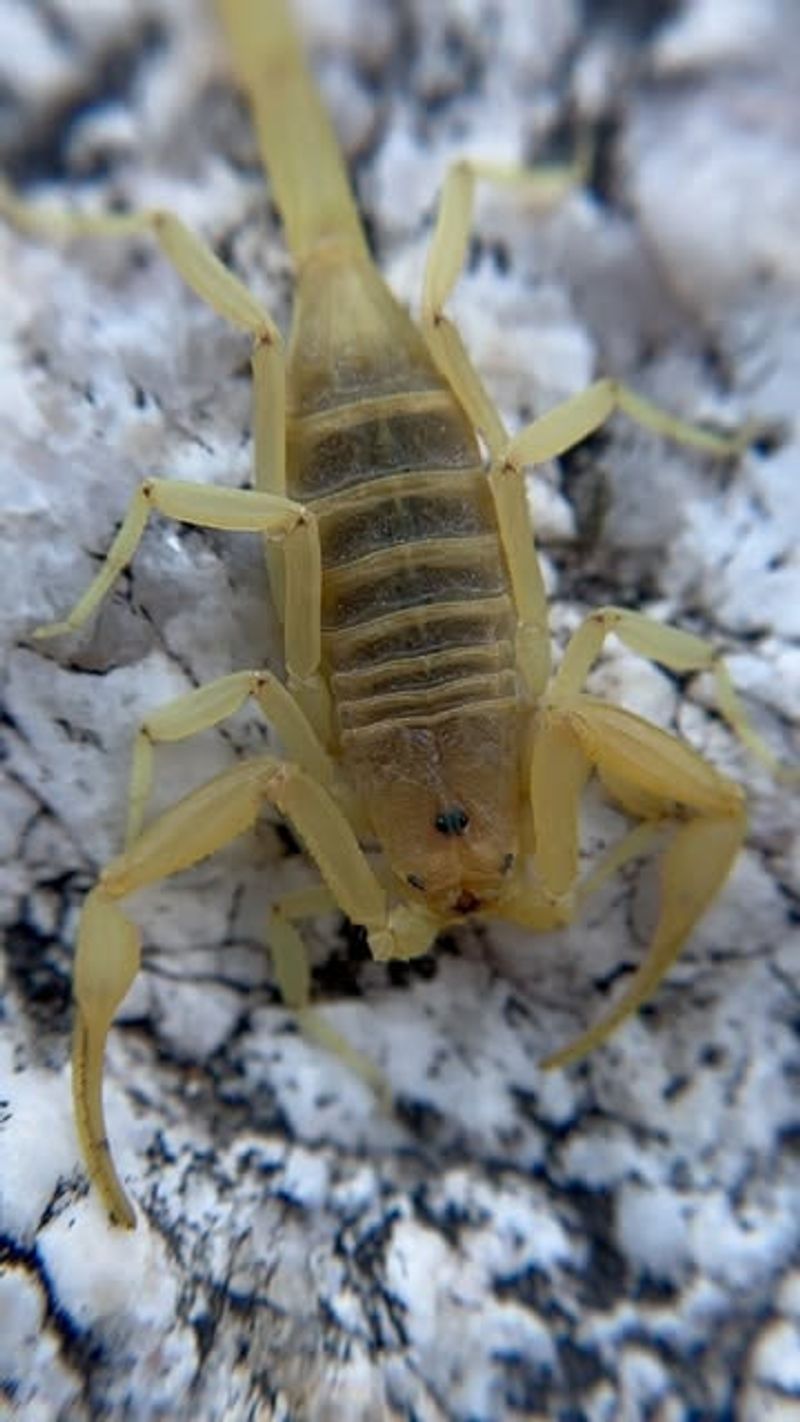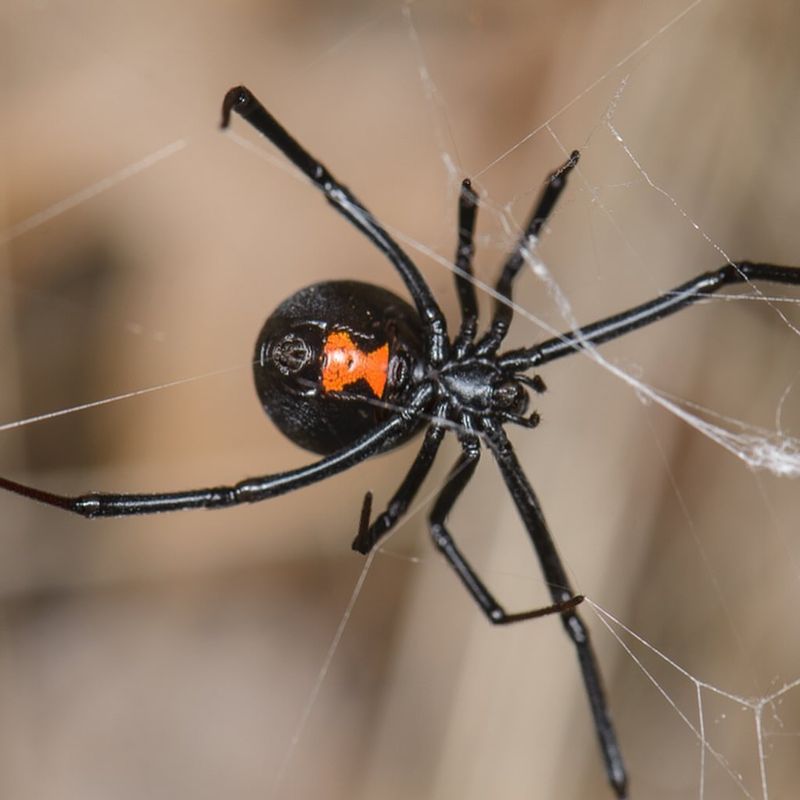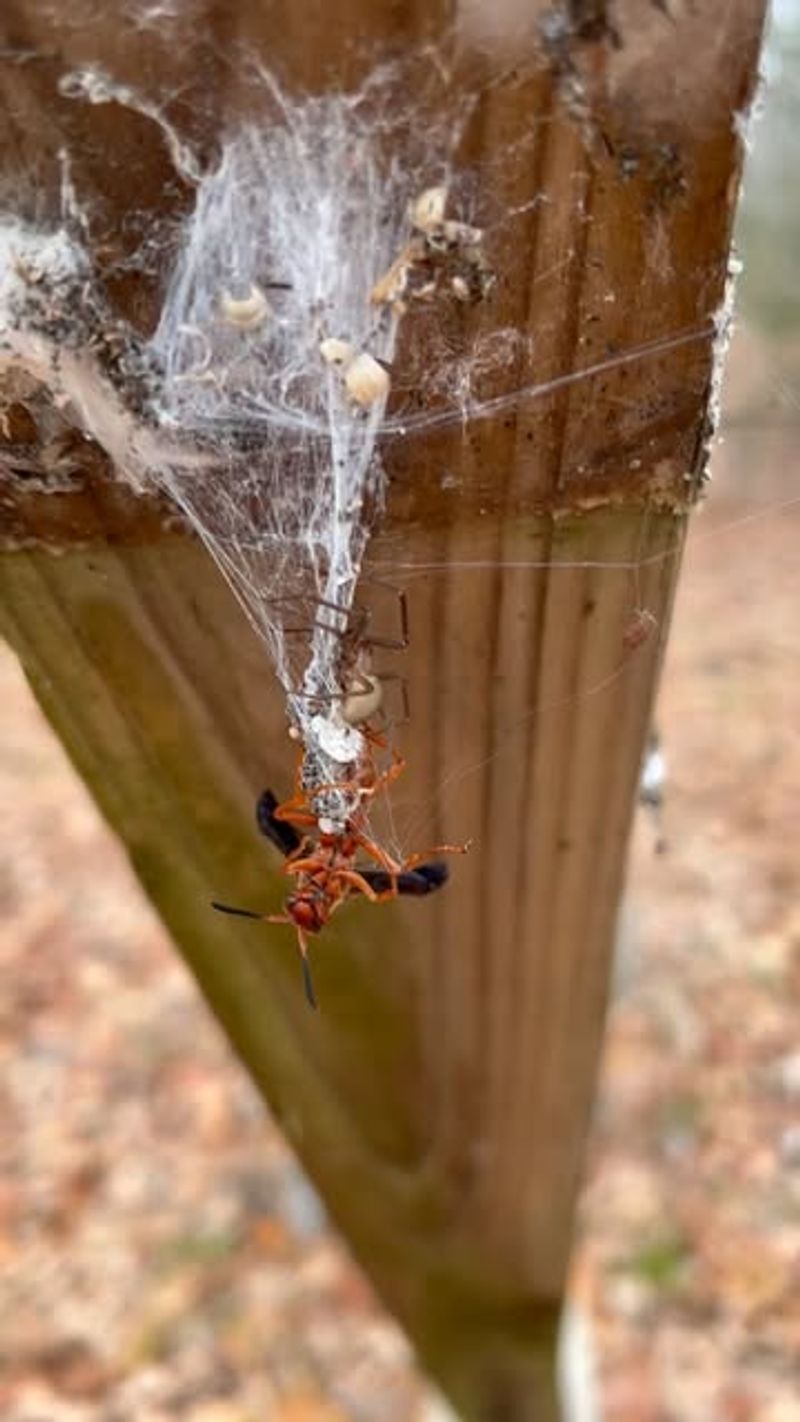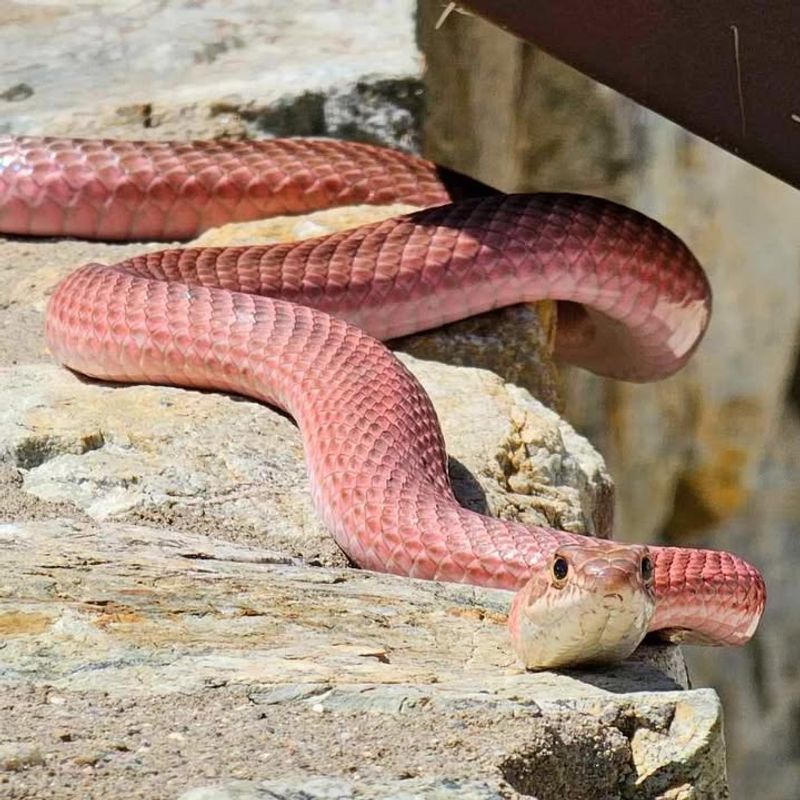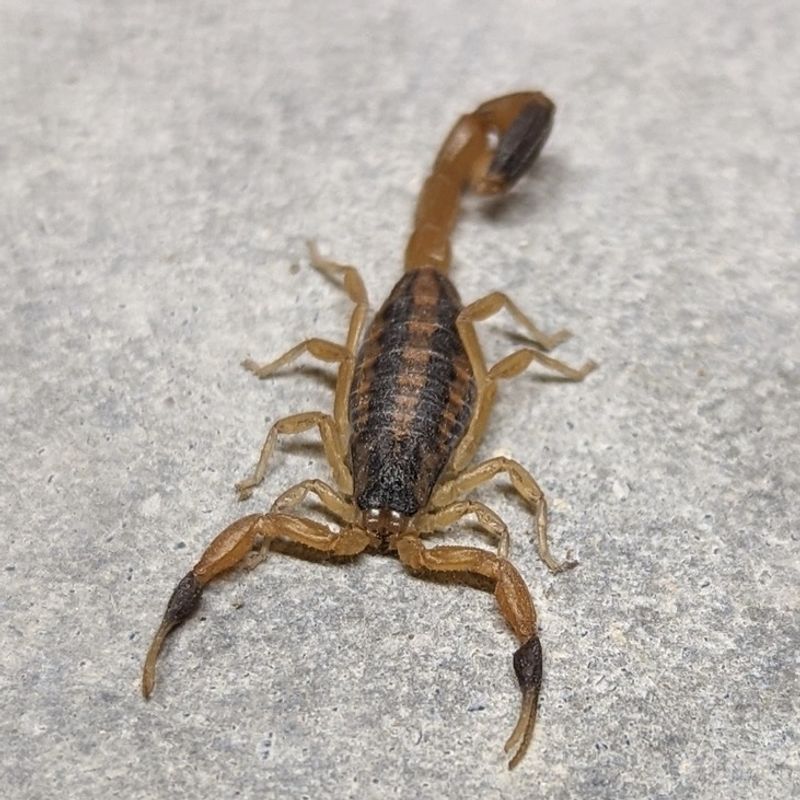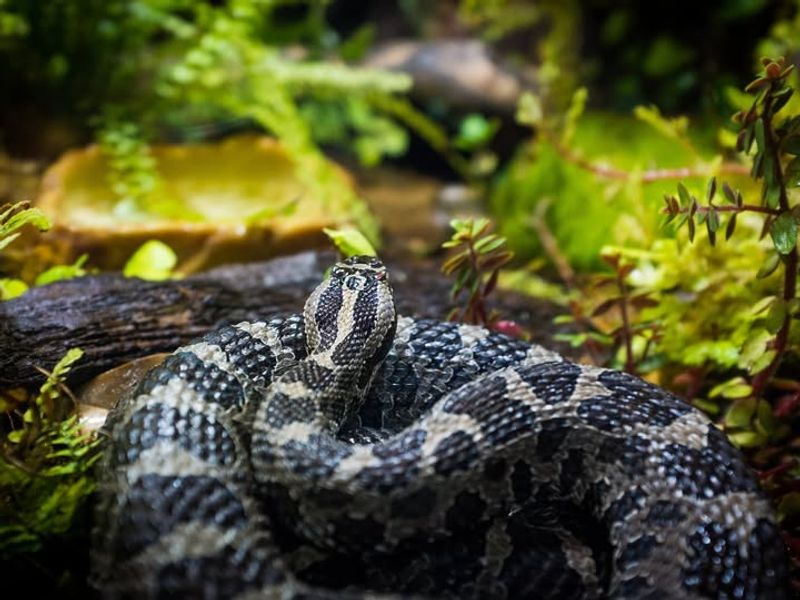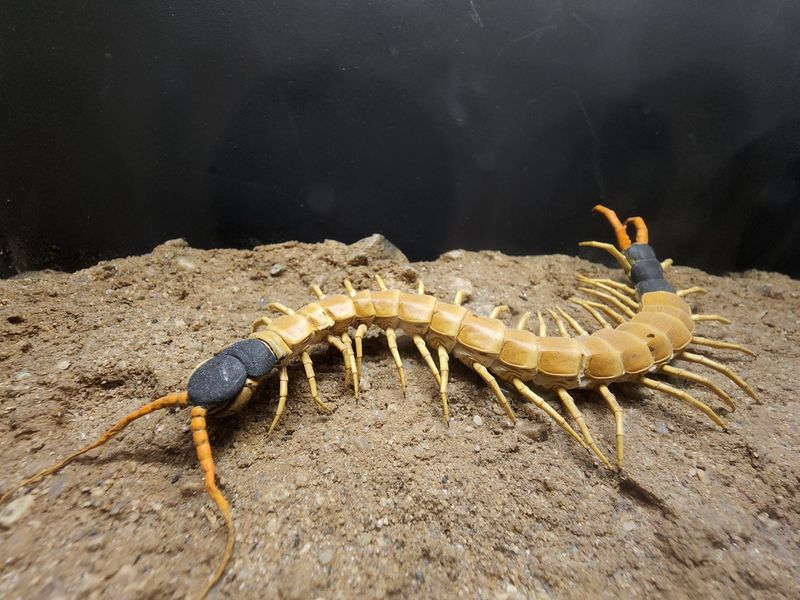Living in New Mexico means sharing your space with some truly fascinating desert creatures. But a few of them—especially the venomous ones—can pose serious risks if you’re not careful.
Many of these animals blend right into the landscape, making them tough to spot. You might not notice them until it’s too late, especially around rocks, brush, or garden edges.
I’ve found that learning what they look like can help you stay safe and avoid painful encounters. A little awareness goes a long way when nature’s hiding in plain sight.
1. Western Diamondback Rattlesnake
With its signature diamond patterns and menacing rattle, this snake is responsible for more bites than any other venomous snake in the state.
They love hiding under rocks, in woodpiles, and around garden sheds where mice hang out. Adults can reach up to seven feet long and pack enough venom to cause serious tissue damage.
Always watch where you step during warm months, especially at dawn and dusk when they hunt. If you hear that distinctive rattle sound, freeze and slowly back away without making sudden movements.
2. Arizona Bark Scorpion
Arizona bark scorpions glow bright green under ultraviolet light, which makes nighttime checks with a blacklight helpful for homeowners.
Their venom can cause severe pain, numbness, and breathing problems, especially in children and elderly people. Unlike other scorpions, they climb walls and ceilings with ease, sometimes dropping onto beds or hiding in shoes.
Check your footwear before putting it on, and shake out towels and clothes. They measure only about three inches long but deliver one of the most painful stings in North America.
3. Black Widow Spider
That shiny black body with a bright red hourglass underneath makes the female black widow unmistakable and far more dangerous than the smaller male.
She prefers dark, undisturbed spaces like garages, storage boxes, and outdoor furniture that hasn’t been moved in a while. Her neurotoxic venom attacks the nervous system, causing muscle cramps, nausea, and severe pain throughout the body.
Bites rarely kill healthy adults, but medical attention is absolutely necessary. Wear gloves when reaching into dark spaces, and regularly clean cluttered areas where spiders love to build webs.
4. Prairie Rattlesnake
Prairie rattlers blend perfectly into grasslands and prairie environments, making them nearly invisible until you’re dangerously close.
Their venom contains hemotoxins that destroy blood cells and tissue, requiring immediate emergency care if bitten. They’re generally smaller than their diamondback cousins but equally dangerous and surprisingly common around homes near open fields.
During spring and fall, they’re most active and likely to cross paths with people doing yard work. Always wear boots and long pants when walking through tall grass or working near rock piles in rural areas.
5. Mojave Rattlesnake
Often called the most dangerous rattlesnake in North America, the Mojave rattler has venom that attacks both blood and nerves simultaneously.
Victims might not feel much pain initially, which tricks them into thinking the bite wasn’t serious until symptoms suddenly worsen. They inhabit desert scrublands and sandy areas throughout southern New Mexico, often near homes in developing neighborhoods.
Their greenish tint helps them disappear against desert vegetation perfectly. Unlike other rattlers, their venom can cause vision problems, difficulty swallowing, and respiratory failure requiring immediate hospitalization and antivenom treatment.
6. Brown Recluse Spider
Sporting a violin-shaped mark on its back, the brown recluse lives up to its name by avoiding people whenever possible. Its bite often goes unnoticed at first, then develops into a nasty wound that kills surrounding tissue over several days.
They hide in closets, attics, and storage areas where they won’t be disturbed by human activity. Most bites happen when people accidentally press against them while dressing or moving stored items.
Keep storage areas organized, seal cracks in walls, and use sticky traps to monitor for these secretive spiders around your home.
7. Coachwhip Snake
While not actually venomous, coachwhips are often mistaken for dangerous snakes and deserve mention because they’re incredibly aggressive when cornered. They can chase people at speeds up to eight miles per hour, which terrifies unsuspecting homeowners working in their yards.
Their long, whip-like bodies can reach eight feet, and they won’t hesitate to bite repeatedly if threatened or handled.
The bites aren’t venomous but can cause painful wounds that may become infected. Give them plenty of space, and they’ll usually speed away. Never attempt to catch or corner one during outdoor activities.
8. Striped Bark Scorpion
Two dark stripes running down its back make this scorpion easy to identify among New Mexico’s scorpion species. Though less dangerous than the bark scorpion, its sting still packs a painful punch that causes swelling and discomfort for hours.
They’re excellent climbers and often enter homes through tiny cracks around windows, doors, and plumbing penetrations in walls. At night, they hunt insects around outdoor lights, which brings them close to entry points.
Seal gaps around your home’s foundation, install weather stripping, and keep firewood away from exterior walls to reduce encounters with these nocturnal hunters.
9. Massasauga Rattlesnake
Smaller and stockier than other rattlesnakes, the massasauga prefers wetland areas and marshy grasslands that most people don’t associate with New Mexico. Their shy nature means they’d rather hide than fight, but they will defend themselves when accidentally stepped on.
Their venom is less potent than larger rattlesnakes, but bites still require medical treatment to prevent complications and infection.
They’re most active during cooler morning hours when they sun themselves on rocks or logs. Watch carefully when hiking near streams, ponds, or irrigation ditches where these secretive snakes make their homes year-round.
10. Giant Desert Centipede
Reaching up to eight inches long, this rusty-orange arthropod looks like something from a nightmare with its many legs and aggressive behavior. Modified front legs called forcipules inject venom that causes intense burning pain, swelling, and sometimes fever in bite victims.
They hunt at night for insects, lizards, and even small rodents, often wandering into homes through gaps under doors. Despite their scary appearance, bites are rarely dangerous to healthy adults but extremely painful for several hours.
Remove clutter around your foundation, fix door sweeps, and use a blacklight to spot them during evening inspections outside.

